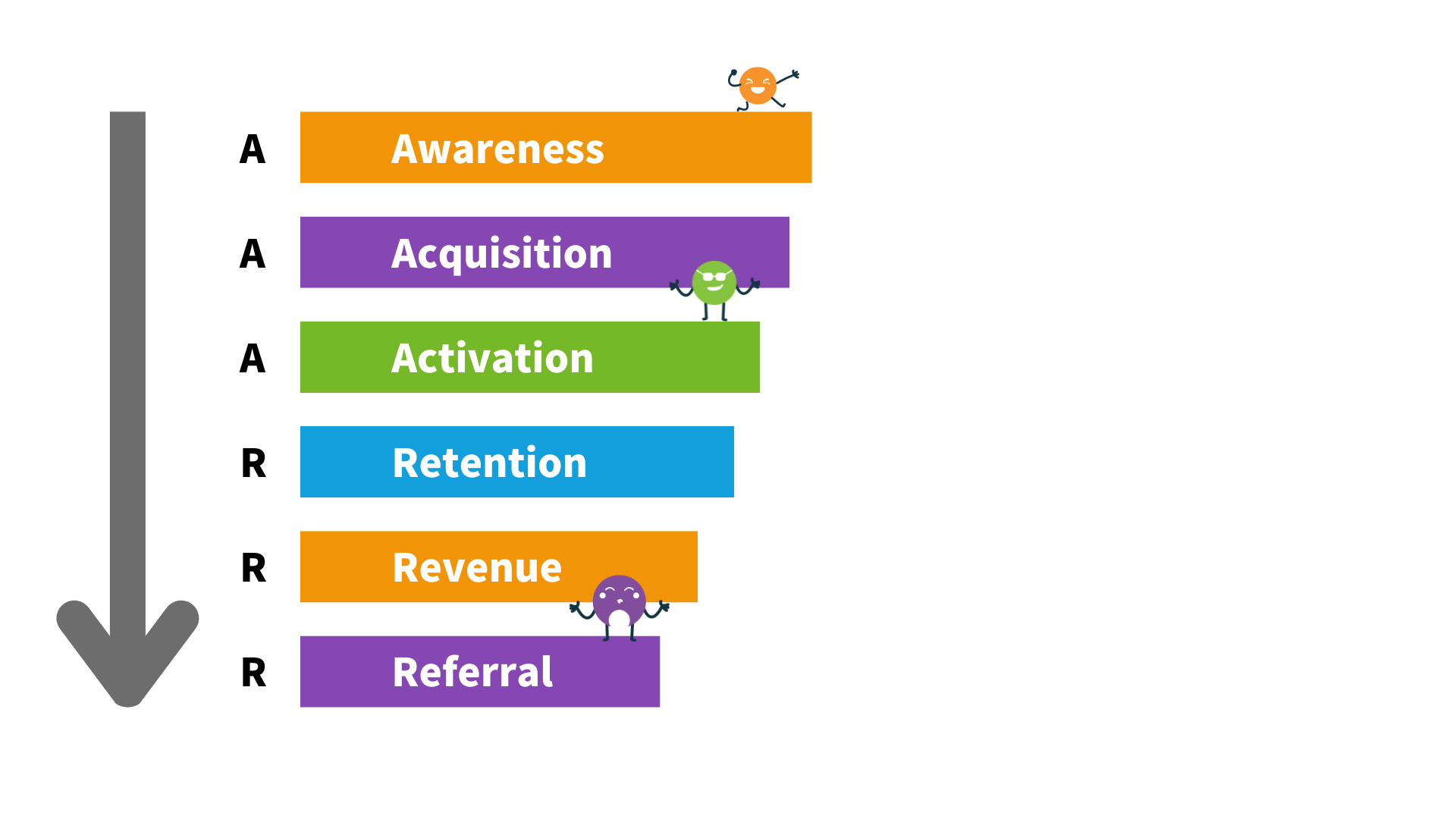The clearest definition of growth hacking!
Growth hacking is a dynamic strategy that melds creativity with analytical prowess to propel rapid growth. It's all about quick, efficient experimentation, leveraging out-of-the-box methods to exponentially increase a company's customer base and revenues.
At the heart of growth hacking is a constant drive for growth through ceaseless experimentation and fine-tuning. This method blends creativity and a deep understanding of data, focusing sharply on strategies that yield the highest returns. Growth hackers deploy innovative approaches to not only attract but also retain customers, ensuring every action contributes to the broader business objectives.
In essence, growth hacking transcends traditional marketing techniques, embodying a mindset focused on breaking the norms to foster success in today's digital landscape.

So, How Does It work?
Growth hacking is fundamentally about embracing innovative and unconventional methods to quickly grow a business or boost user numbers, moving away from traditional marketing tactics. The process starts by setting clear, measurable objectives, such as increasing user sign-ups or revenue, that guide the growth initiatives. Integrating growth hacking principles with strategic growth marketing elements enables companies to develop a well-rounded approach for their expansion.
The specifics of growth goals and strategies differ across industries and business sectors. As such, it's important to tailor growth strategies to fit the particular needs and dynamics of each field. For instance, in e-commerce, a growth strategy might involve using a variety of marketing channels and tactics to pull in customers, escalate sales, and amplify revenue.
Growth Hacking Funnels
The AAARRR framework, also known as the A3R3 framework, offers a structured way to enhance the customer journey. Created by Dave McClure in 2007, it breaks down the journey into key stages that help a business understand and optimize its interactions with customers.
Awareness:
The starting point is making potential customers aware of your product. This usually involves advertising, engaging with users on social media, and sharing content that resonates with your audience.
Acquisition:
This stage is all about drawing people in to take their first action, such as signing up or opening an account. Here, the focus is on employing creative tactics to grab their interest and encourage them to engage further.
Activation:
Once people have taken the first step, it’s crucial that they have a positive initial experience. This might mean guiding them to complete their profile or inviting them to try a key feature of your product.
Retention:
Keeping customers interested and ensuring they return is vital. This is achieved by fostering relationships, providing ongoing support, and continually adding value through updates or new features.
Revenue:
Ultimately, the goal is to drive purchases. Strategies at this stage include setting the right pricing, offering upsells, and ensuring overall customer satisfaction to encourage ongoing spending.
Referral:
The final step involves turning satisfied customers into advocates who help promote your product through referral programs and word-of-mouth. This not only helps spread the word but also builds a community around your product.
This framework is particularly effective in guiding startups and digital businesses through the process of growing their user base and enhancing customer engagement in a structured way.
The Top 8 Growth Hacking Strategies
1. Build Your Email List
A key growth hacking strategy is to build an email list. By gathering emails from interested parties, you can foster ongoing relationships, offer valuable insights, and drive conversions. CloudOffix offers comprehensive features for managing and growing your email list, including:
Centralizing Contact Management: Keep all your contact information in one place.
Segmentation: Divide your audience into segments to tailor your communications.
Personalization: Customize messages to address the needs of individual subscribers.
Automation: Streamline repetitive tasks to increase efficiency.
Analytics: Measure and analyze the performance of your campaigns to refine strategies.
Email Marketing: Engage directly with your audience by delivering valuable content or promotions, encouraging sign-ups, and targeting campaigns based on user behavior to enhance sales.
2. Discover CloudOffix's All-in-One Email Marketing Platform
Streamline your email marketing with CloudOffix’s email marketing platform that allows you to send bulk emails, track interactions, and manage campaigns without needing third-party services. Features include:
Drag-and-Drop Email Design: Easily create appealing emails that are mobile-responsive.
Advanced Email Validation: Reduce spam risks and improve deliverability.
A/B Testing: Test and optimize your emails for better results
3. Leverage Virality
Utilize the power of word-of-mouth by creating share-worthy content or experiences. Encourage your audience to spread the word through incentives or seamless sharing options. Effective use of virality can significantly increase your brand’s reach and attract new customers organically.
4. Content Marketing
Develop content that offers value and fosters trust with your audience. A strong content strategy helps attract, engage, and convert viewers into customers, fueling growth and enhancing brand reputation.
5. SEO (Search Engine Optimization)
Improve your site’s visibility in search results by optimizing content and keywords. Effective SEO attracts more visitors organically, a crucial strategy for increasing online presence and driving traffic without additional advertising costs.
6. Social Media Marketing
Use platforms like Facebook, Instagram, Twitter, LinkedIn, and Pinterest to connect with your audience, boost brand visibility, drive traffic, and increase sales. Share engaging content to interact with followers and grow your social media presence.

7. Provide Freemium and Develop Free Tools
Freemium Model: Offer a basic service for free with the option for users to upgrade for more features, enticing users to try your product with no initial investment.
Developing Free Tools: Create tools or resources that solve specific problems or add value for your audience, attracting users and generating traffic.
8. Partnerships and Collaborations
Collaborate with other businesses, influencers, or organizations to expand your reach, access new audiences, and create opportunities that benefit all parties involved.
These strategies, if implemented effectively, can significantly accelerate your business growth by maximizing customer engagement and expanding your reach across various platforms.
